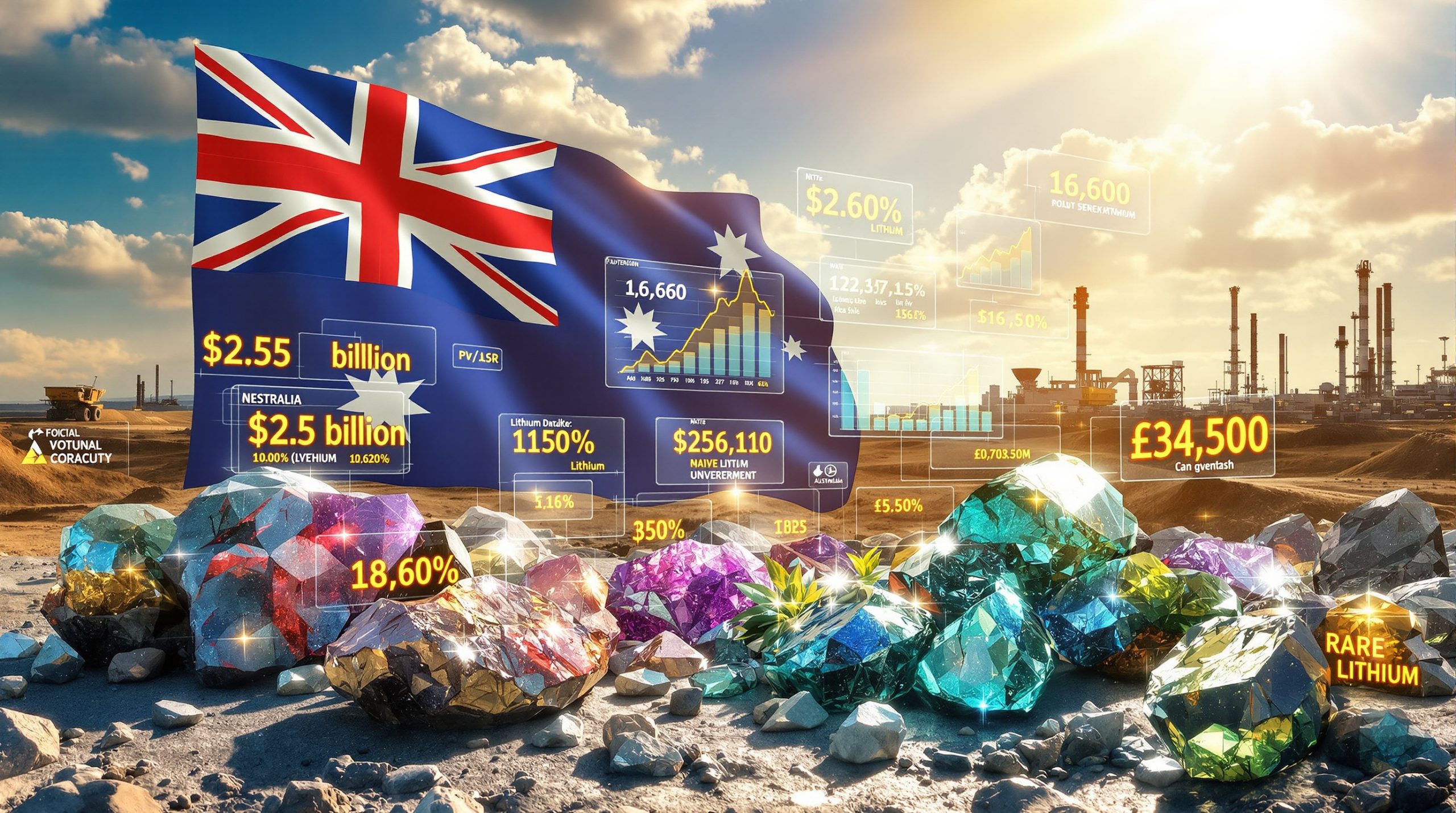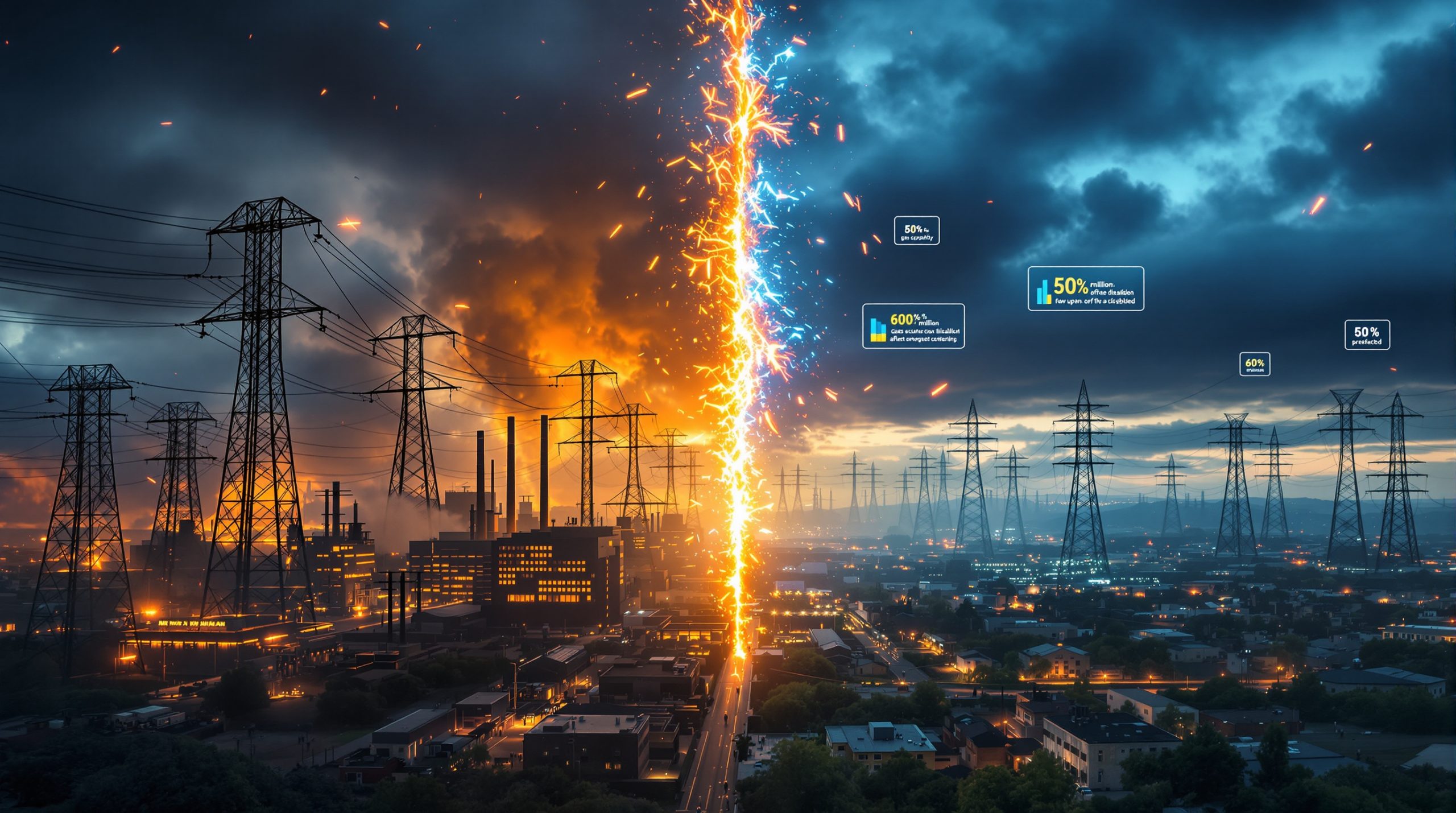Understanding Australia's Rare Earth Investment Landscape
Australia has emerged as a strategic cornerstone in the global effort to diversify rare earth supply chains away from Chinese dominance. Mining billionaire Gina Rinehart rare earth shares investments across four ASX-listed companies reflect a sophisticated understanding of geopolitical trends that are reshaping the critical minerals sector. Furthermore, the australia critical minerals strategy aligns with international efforts to reduce supply chain vulnerabilities.
The rare earth elements sector encompasses 17 specialised metals that form the backbone of modern technology infrastructure. These materials are essential for manufacturing everything from electric vehicle batteries and wind turbines to advanced defence systems and consumer electronics. Despite their name suggesting scarcity, rare earth elements are relatively abundant in the Earth's crust but require complex processing techniques to extract and refine into usable forms.
The Strategic Importance of Rare Earth Elements
China's overwhelming control of global rare earth supply chains presents significant vulnerabilities for Western nations. Current data indicates Chinese producers control approximately 60% of worldwide production capacity, while their dominance becomes even more pronounced in downstream processing, where they command over 90% of global refining operations. Moreover, critical minerals energy security has become a priority for many governments.
This concentration creates substantial risks for countries dependent on these materials for critical applications. The United States, for instance, relies on Chinese sources for roughly 70% of its rare earth imports, according to US Geological Survey data. Such dependency becomes particularly concerning when considering the strategic importance of these materials for defence applications and clean energy infrastructure.
Key Applications of Rare Earth Elements:
- Permanent magnets for wind turbines and electric motors
- Catalysts for petroleum refining processes
- Phosphors for LED lighting and display screens
- Specialised alloys for aerospace applications
- Advanced ceramics for electronic components
Market Dynamics Driving Investment Interest
Recent geopolitical developments have accelerated international recognition of supply chain vulnerabilities. China's expansion of export controls now covers 12 rare earth elements, representing a significant increase from previous restrictions. Consequently, this regulatory tightening coincided with broader trade tensions, including threats of 100% tariffs on Chinese products.
These policy developments have created unprecedented opportunities for producers operating outside Chinese jurisdiction. However, the european crm facility development suggests Western nations are taking decisive action to secure alternative supply sources.
Supply Chain Risk Factors:
- Geographic concentration: Over 90% of processing capacity in single country
- Export restrictions: Expanding government controls on strategic materials
- Trade tensions: Escalating tariff threats affecting bilateral commerce
- Strategic dependencies: Critical defence and clean energy applications at risk
Gina Rinehart's Rare Earth Investment Strategy
Rinehart's approach to rare earth investments demonstrates sophisticated positioning across multiple stages of the mining value chain. Her portfolio strategy emphasises companies with assets located outside Chinese control while targeting different development phases from exploration through production. In addition, the big pivot critical minerals approach reflects broader industry recognition of shifting market dynamics.
The mining magnate's entry into rare earth investments began during early 2024, coinciding with escalating trade tensions and growing international recognition of supply chain risks. Her investment timing reflects deep understanding of commodity cycles and the geopolitical factors driving market sentiment in the critical minerals sector.
Investment Philosophy and Market Timing
Each investment in Rinehart's rare earth portfolio addresses specific market opportunities while providing geographic and developmental diversification. This approach reduces concentration risk while maximising exposure to sector growth potential driven by supply chain security concerns. Furthermore, recent developments including the trump order on critical minerals suggest continued government support for alternative supply chains.
Rinehart's Rare Earth Portfolio Overview:
| Company | Ownership % | Investment Value | Primary Location | Development Status |
|---|---|---|---|---|
| Lynas Rare Earths | 8.2% | ~$1.7 billion | Australia/Malaysia | Commercial Production |
| Arafura Rare Earths | 9.4% | ~$120 million | Northern Territory | Development Stage |
| Brazilian Rare Earths | 5.0% | ~$30 million | Brazil | Exploration Phase |
| St George Mining | Undisclosed | $22.5 million | Brazil | Resource Development |
The strategic positioning across three continents provides multiple pathways to market access while reducing regulatory and political risks associated with single-jurisdiction exposure. This diversification strategy aligns with broader international efforts to establish resilient supply chains for critical materials.
Geographic Risk Mitigation
Australia's political stability, established mining regulatory framework, and strategic alliance relationships with the United States create favourable conditions for rare earth development. Brazil offers additional geographic diversification while providing access to underexplored geological provinces with significant discovery potential.
Strategic Insight: Rinehart's investments span multiple continents and development stages, providing diversified exposure to rare earth value chains while maintaining focus on assets outside Chinese control.
What Makes These Four Companies Attractive Investment Targets?
The companies within Rinehart's rare earth portfolio represent complementary investment opportunities across different aspects of the supply chain development process. Each offers distinct advantages in terms of resource quality, development progress, and market positioning. Consequently, this strategic approach to Gina Rinehart rare earth shares reflects sophisticated understanding of sector dynamics.
Production Capability and Processing Infrastructure
Lynas Rare Earths provides immediate exposure to established production and revenue streams through its operational Mt Weld mine and Malaysian processing facility. This mature asset offers stable cash flow generation and established market relationships that support the broader portfolio strategy.
Arafura Rare Earths represents significant future production potential through its advanced-stage Nolans project, which has secured substantial debt funding commitments and established offtake agreements with international partners. The development-stage asset provides exposure to the transition from construction to commercial production.
Exploration and Discovery Potential
Brazilian Rare Earths and St George Mining offer exposure to underexplored geological provinces with potential for significant resource discoveries. These investments provide leverage to exploration success while accessing regions with favourable geology for rare earth mineralisation.
Investment Stage Diversification:
- Production stage: Immediate cash flow and established operations
- Development stage: Near-term production with secured financing
- Exploration stage: Discovery potential and resource expansion
- Resource development: Technical advancement and economic studies
Lynas Rare Earths – The Portfolio Cornerstone
As Australia's dominant rare earth producer, Lynas represents the most mature and substantial investment within Rinehart's portfolio. The company's established operations provide immediate exposure to rare earth market dynamics while offering stability through proven production capabilities.
Mt Weld Mine – World-Class Resource Base
The Mt Weld deposit in Western Australia ranks among the world's highest-grade rare earth resources, with geological characteristics that support decades of continuous production. The mine's strategic location provides secure access to global markets through established transportation infrastructure and proximity to processing facilities.
Resource quality at Mt Weld includes high concentrations of the most commercially valuable rare earth elements, particularly those used in permanent magnet applications. This favourable mineralogy reduces processing complexity and enhances economic returns compared to lower-grade deposits requiring more intensive beneficiation.
Malaysian Processing Operations
Lynas operates one of the world's largest rare earth processing facilities outside China through its Malaysian operations. This downstream capability provides crucial value-added processing that transforms raw ore concentrates into refined rare earth products suitable for end-user applications.
The integrated mine-to-market approach positions Lynas as a comprehensive rare earth supplier capable of competing directly with Chinese producers. This processing capability represents a significant competitive advantage in a market where refining capacity remains heavily concentrated in China.
Lynas Performance Metrics:
- Market capitalisation: Exceeding $20 billion
- 2024 share price performance: +195% year-to-date
- Rinehart's investment value: Approximately $1.7 billion
- Ownership stake: 8.2% of outstanding shares
Arafura Rare Earths – Development Stage Opportunity
Arafura's Nolans project represents one of Australia's most advanced undeveloped rare earth resources, with the company progressing through final development financing stages. Rinehart's early investment positions her portfolio to benefit from the transition from development to commercial production.
Nolans Project Development Progress
The Northern Territory-based project has achieved significant development milestones, including securing over US$1 billion in conditional debt funding commitments from multiple international lenders. This financing progress demonstrates strong commercial viability and reduces development risk substantially.
Offtake agreements with several major global partners provide revenue certainty and market access for future production. These commercial arrangements support project financing while establishing long-term customer relationships in key international markets.
Strategic Location Advantages
The Nolans project benefits from proximity to established transportation infrastructure and supportive regulatory environments within Australia's Northern Territory. The location provides access to skilled mining workforces and established supply chains that reduce operational complexity and development costs.
Australia's stable political environment and established mining regulatory framework provide additional advantages compared to rare earth projects in less stable jurisdictions. These factors contribute to lower investment risk profiles and more predictable development timelines.
Arafura Investment Highlights:
- Initial Hancock investment: $60 million (late 2022)
- Current stake value: Approximately $120 million
- 2024 share performance: +238% year-to-date
- Development funding: Over US$1 billion conditional commitments
Brazilian Rare Earths – Exploration Upside Potential
Brazilian Rare Earths provides exposure to South America's underexplored rare earth potential through extensive exploration tenure in Brazil's northeastern regions. The company's focus on district-scale discoveries offers significant upside potential for resource growth and value creation.
Rocha da Rocha Project Potential
The project area encompasses largely unexplored terrain despite showing numerous rare earth occurrences across the exploration tenure. This geological setting suggests substantial discovery potential that could dramatically increase resource estimates through systematic exploration programmes.
Brazil's geological provinces contain favourable conditions for rare earth mineralisation, with several regions showing similarities to known productive areas worldwide. The underexplored nature of these regions creates opportunities for significant discoveries through modern exploration techniques.
Recent Capital Raising Success
The company's successful $120 million capital raising demonstrates strong investor confidence in project potential while providing funding for accelerated exploration programmes. This financing enables systematic exploration across priority target areas identified through initial reconnaissance work.
Brazilian Rare Earths Key Statistics:
- ASX listing date: December 2023
- 2024 performance: +147% year-to-date
- Share price: $5.68 (as of recent trading)
- Recent funding: $120 million committed
St George Mining – Latest Strategic Addition
Rinehart's most recent rare earth investment targets the Araxá project in Brazil, expanding geographic diversification while accessing resources that combine rare earth and niobium mineralisation. This dual-commodity approach provides multiple revenue streams and reduces single-commodity price risk.
Araxá Project Characteristics
The project combines rare earth elements with niobium resources, creating potential for diversified mineral production from a single operation. Niobium represents an additional critical mineral with applications in high-strength steel alloys and superalloys for aerospace applications.
Resource characteristics indicate potential for a large-scale mining operation with favourable metallurgical properties. The dual-commodity nature provides operational flexibility and multiple market opportunities for revenue generation.
Development Funding and Timeline
The recent $72.5 million funding round, anchored by Hancock Prospecting's $22.5 million investment, provides capital for comprehensive resource upgrades, permitting activities, and detailed economic assessments. This funding supports advancement through key development milestones.
Planned activities include mineral resource upgrades, metallurgical test work, environmental permitting, and economic studies that will define project viability and development pathways. These technical programmes are essential for advancing toward development decisions.
St George Mining Recent Developments:
- 2024 share performance: +550% year-to-date
- Hancock investment: $22.5 million commitment
- Total project funding: $72.5 million raised
- Resource potential: Rare earths and niobium combination
How Do These Investments Align with Global Supply Chain Trends?
Rinehart's portfolio positioning reflects broader international initiatives to establish alternative rare earth supply chains outside Chinese control. These efforts are driven primarily by US and European security concerns regarding critical mineral dependencies.
US Strategic Mineral Security Initiatives
Reports suggesting potential direct US government investment in Australian rare earth projects indicate the strategic importance American policymakers place on securing alternative supply sources. Such involvement could provide additional value catalysts for portfolio companies through government partnership opportunities.
The US Defense Production Act and other strategic mineral initiatives create frameworks for government support of critical mineral projects. These programmes can provide financing, offtake agreements, and other forms of assistance that enhance project economics and reduce development risks.
Allied Nation Cooperation Frameworks
Growing cooperation between Australia, the United States, and other allied nations on critical mineral security creates increasingly favourable policy environments for non-Chinese rare earth producers. These cooperative frameworks include trade facilitation, technical cooperation, and joint investment initiatives.
International Strategic Initiatives:
- AUKUS partnership: Advanced technology cooperation including critical minerals
- Minerals Security Partnership: US-led initiative for supply chain diversification
- Critical Raw Materials Act: European Union framework for strategic mineral security
- US-Australia cooperation: Bilateral agreements on critical mineral development
The alignment between government strategic objectives and private investment opportunities creates supportive environments for rare earth project development outside Chinese control. This policy support enhances investment attractiveness and reduces regulatory risks.
What Are the Key Risk Factors for Rare Earth Investments?
Despite strong fundamental drivers, rare earth investments face several significant risk categories that potential investors must carefully evaluate. These risks span technical, market, regulatory, and geopolitical dimensions that can substantially impact investment outcomes for Gina Rinehart rare earth shares and similar investments.
Commodity Price Volatility
Rare earth markets can experience dramatic price fluctuations driven by supply-demand imbalances, technological changes in end-user applications, and geopolitical developments affecting trade flows. Individual rare earth elements show varying price behaviours based on their specific supply and demand fundamentals.
Historical price data demonstrates significant volatility across different rare earth elements, with some experiencing multi-year boom-bust cycles that can dramatically affect producer profitability. This price volatility creates substantial revenue uncertainty for mining operations and development projects.
Technical and Environmental Challenges
Rare earth processing involves complex metallurgical procedures requiring specialised expertise and substantial capital investment. Processing facilities must handle radioactive elements naturally associated with rare earth ores, creating additional regulatory and environmental compliance requirements.
Environmental permitting for rare earth projects often faces extended timelines and community concerns regarding radioactive waste management and water treatment. These factors can significantly impact project development schedules and capital costs.
Comprehensive Risk Assessment Framework:
| Risk Category | Key Factors | Impact Level |
|---|---|---|
| Market Risks | Price volatility, demand fluctuations | High |
| Technical Risks | Processing complexity, metallurgical challenges | Medium-High |
| Regulatory Risks | Environmental approvals, export controls | Medium |
| Geopolitical Risks | Trade tensions, policy changes | High |
Regulatory and Permitting Uncertainties
Mining project approvals require navigating complex regulatory frameworks that can vary significantly between jurisdictions. Environmental impact assessments, community consultation processes, and heritage considerations can extend development timelines substantially.
Export control regimes affecting rare earth trade continue evolving as governments implement strategic mineral policies. These regulatory changes can affect market access and pricing for rare earth producers operating in different jurisdictions.
Investment Performance Analysis and Future Outlook
The dramatic share price appreciation across Rinehart's rare earth portfolio reflects both favourable sector fundamentals and successful company-specific execution. These performance metrics provide insights into market dynamics and future potential for continued outperformance.
Portfolio Performance Metrics
The exceptional performance of rare earth stocks in 2024 demonstrates strong investor appetite for alternative supply chain opportunities. Each company in Rinehart's portfolio has significantly outperformed broader market indices, reflecting sector-specific momentum and individual company achievements.
Comparative Performance Analysis:
| Company | YTD Performance | Key Performance Drivers |
|---|---|---|
| Lynas Rare Earths | +195% | Production expansion, market leadership |
| Arafura Rare Earths | +238% | Development progress, financing milestones |
| Brazilian Rare Earths | +147% | Exploration success, market recognition |
| St George Mining | +550% | Resource upgrades, strategic partnerships |
The performance differential between companies reflects varying development stages, execution quality, and market positioning. Companies with more advanced development status or proven resources generally command premium valuations reflecting reduced execution risk.
Future Value Drivers
Multiple catalysts could drive continued outperformance across the rare earth sector, including production capacity expansions, new resource discoveries, strategic partnerships with government entities, and favourable policy developments supporting supply chain diversification.
Potential Catalysts for Continued Growth:
- Production milestones: First production from development projects
- Resource upgrades: Increased reserve and resource estimates
- Strategic partnerships: Government or corporate joint ventures
- Policy support: Favourable regulatory or trade policy changes
- Market expansion: Growing demand from clean energy applications
Technical advancement in processing technologies could reduce costs and environmental impacts, improving project economics and regulatory approval prospects. Innovation in extraction and processing methods represents a key area for sector advancement.
Should Individual Investors Follow Rinehart's Strategy?
While Rinehart's investment success demonstrates the potential for substantial returns in rare earth investments, individual investors should carefully assess their risk tolerance, portfolio diversification needs, and investment timeframes before pursuing similar strategies with Gina Rinehart rare earth shares or comparable investments.
Portfolio Allocation Considerations
Professional investment advisors typically recommend that commodity investments, including mining stocks, represent only a modest portion of diversified investment portfolios due to their inherent volatility and sector-specific risks. Rare earth investments carry additional complexity related to geopolitical factors and technical processing challenges.
Individual investors considering rare earth exposure should evaluate their overall portfolio composition, risk tolerance, and investment objectives. Concentration in single sectors or themes can create substantial portfolio volatility that may not align with long-term financial planning objectives.
Alternative Exposure Methods
Investors seeking rare earth market exposure might consider diversified approaches including exchange-traded funds focused on rare earth producers, larger diversified mining companies with rare earth operations, or technology companies positioned to benefit from secure rare earth supply chains.
Investment Approach Options:
- Direct stock ownership: Individual rare earth producer shares
- Sector ETFs: Diversified rare earth or critical mineral funds
- Diversified miners: Large mining companies with rare earth exposure
- Technology stocks: Companies benefiting from secure rare earth supplies
Each approach offers different risk-return profiles and exposure characteristics that may better align with individual investment objectives and risk tolerances than concentrated positions in individual rare earth producers.
Frequently Asked Questions About Rare Earth Investments
Why is China's dominance in rare earths concerning?
China's overwhelming control of rare earth supply chains creates strategic vulnerabilities for countries dependent on these materials for defence applications, technology manufacturing, and clean energy infrastructure. Supply disruptions, whether intentional or accidental, could significantly impact critical industries and national security capabilities.
The concentration of processing capacity represents a particularly acute vulnerability, as raw rare earth ores require complex refining processes to become useful materials. China's control of over 90% of processing capacity means even rare earths mined elsewhere often require Chinese processing facilities.
How long does it take to develop a rare earth mine?
Rare earth mining projects typically require five to ten years from initial discovery to commercial production, depending on resource complexity, environmental requirements, and processing technology needs. This extended timeline reflects the technical challenges of rare earth extraction and processing.
Development timelines include resource definition drilling, environmental impact assessments, processing technology development, permitting activities, construction, and commissioning phases. Complex rare earth processing requirements often extend these timelines beyond those for conventional mineral commodities.
What makes Australian rare earth projects attractive?
Australia offers political stability, established mining regulatory frameworks, skilled workforce availability, and strategic alliance relationships that significantly reduce investment risks compared to alternative jurisdictions. The country's democratic institutions provide predictable regulatory environments for long-term capital investments.
Geological advantages include world-class rare earth deposits with favourable grades and mineralogy, established transportation infrastructure, and proximity to key export markets in Asia. Australia's strategic partnerships with the United States and other allied nations create additional market access opportunities.
Australian Investment Advantages:
- Political stability: Democratic institutions and rule of law
- Mining expertise: Established industry knowledge and workforce
- Infrastructure access: Transportation and processing capabilities
- Strategic alliances: Partnerships with key consumer nations
Strategic Positioning in a Critical Sector
Gina Rinehart's rare earth investment strategy demonstrates sophisticated understanding of geopolitical trends, supply chain security imperatives, and long-term commodity demand drivers. Her diversified portfolio provides comprehensive exposure across the rare earth value chain while maintaining strategic focus on assets operating outside Chinese influence.
The exceptional performance of these investments reflects successful company execution combined with favourable market conditions driven by supply chain security concerns and growing international recognition of critical mineral dependencies. Multiple catalysts suggest continued investor interest in alternative rare earth supply chain development.
Each company within Rinehart's portfolio offers distinct investment characteristics spanning immediate production exposure, near-term development opportunities, and exploration-stage discovery potential. This diversification strategy provides balanced risk-return profiles while maximising sector exposure across multiple development stages and geographic regions.
As global efforts to diversify rare earth supply chains continue expanding, companies positioned outside Chinese control appear well-placed to benefit from increased demand for alternative sourcing arrangements. The combination of resource quality, development progress, strategic location advantages, and policy support suggests sustained investor interest in these investment opportunities.
However, potential investors should carefully consider the sector's inherent volatility, technical complexity, and geopolitical risks before making investment decisions. Professional financial advice and comprehensive risk assessment remain essential for evaluating rare earth investment opportunities within broader portfolio contexts and individual financial planning objectives.
The rare earth investment landscape continues evolving as governments implement strategic mineral policies and companies advance through development milestones. These dynamic conditions create both opportunities and risks that require ongoing monitoring and professional evaluation for successful investment outcomes.
Looking to Capitalise on Critical Minerals Opportunities?
Discovery Alert's proprietary Discovery IQ model instantly identifies significant ASX mineral discoveries across all commodities, including rare earths and critical minerals that could reshape portfolios like Rinehart's investments. Visit our discoveries page to explore how historic discoveries have delivered exceptional returns, then begin your 30-day free trial to stay ahead of market-moving announcements across Australia's mining sector.




